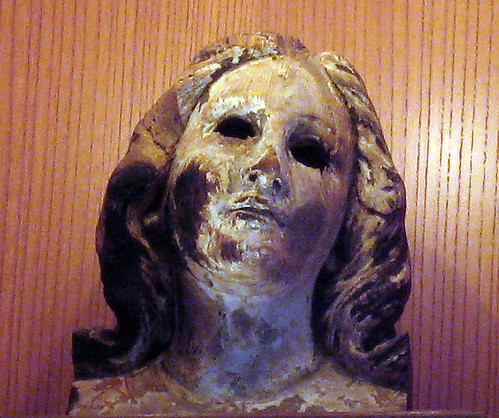August 6, 1945
Nagasaki followed three days later. One witness remembers:
[T]he bomb instead of hitting at the heart of Japanese religion, struck the Catholic district of Nagasaki, the most numerous and important center for the Church in the Far East. The Catholic community then had more than 12,000 faithful. Almost all perished. The epicenter of the explosion was the cathedral which, among other things, at that time was crowded with the faithful in the queue in front of the confessional to prepare for the Feast of the Assumption.
...
When [Professor Nagai, dean of the faculty of medicine at the University of Nagasaki] was able to return [to the church] he found only ashes and bones. As an expert radiologist he had no difficulty in identifying the remains of his wife, Midori. Among the bones of the hand shone something: it was a circle of the rosary and a crucifix. He placed everything into a bucket and sad but not depressed, he made his way towards the graveyard. In the jingle of the rosary and crucifix he seemed to hear the voice of his bride giving him hope.

Remains of the Virgin Mary of Nagasaki, bombed in Urakami Cathedral
A small chapel has been completed to enshrine a part of a wooden statue of the Virgin Mary that was destroyed in the atomic bombing of Nagasaki, to stand as a symbol for peace on the occasion of the 60th anniversary of the atomic bombing.
...
In the cathedral, two priests hearing confessions and some 30 parishioners were killed by the atomic bomb, which exploded at 11:02 a.m.
...
Fragments of the head of the statue, whose face was badly burned on the right side, were found by Kaemon Noguchi, a monk at the Trappist Monastery in Hakodate, Hokkaido, while he was searching through the rubble during a visit to Nagasaki after World War II.
Noguchi took the head back to his monastery as a memento, but after learning that the church was looking for relics that survived the atomic bombing, he returned it to Nagasaki in 1975.

<< Home